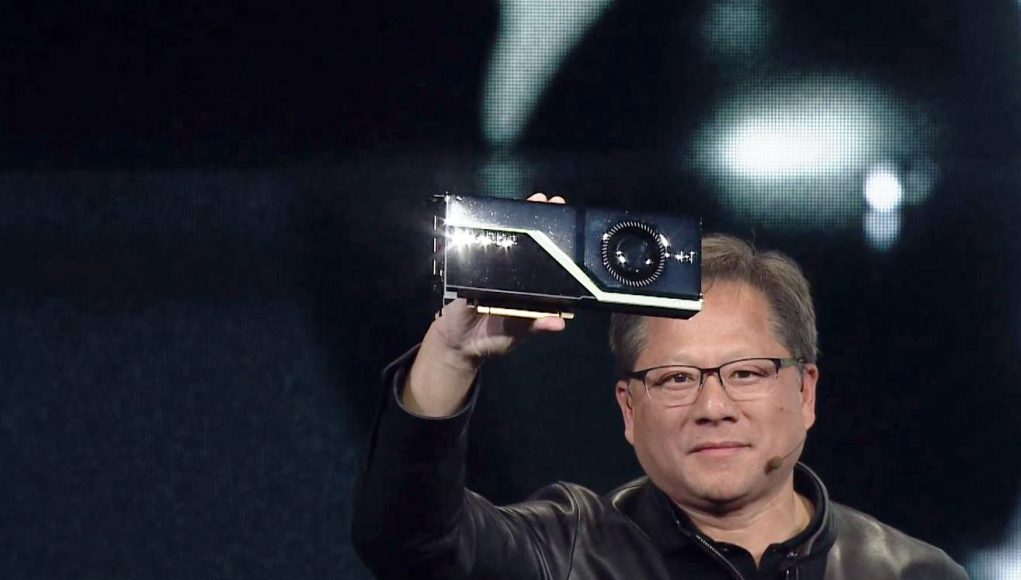
Today at SIGGRAPH 2018 NVIDIA announced ‘Turing’, their next-generation GPU architecture aimed at real-time ray tracing, and the first high-end GPUs built atop it, the Quadro RTX 8000, 6000 and 5000. The cards are the first to include the recently revealed VirtualLink port, a new connection standard specially designed for next-generation VR headsets.
Ray tracing—a computer simulation of individual beams of light which models how they interact with various materials to create the world that we see around us—has been used for a long time in pre-rendered computer graphics, but hasn’t been practically attainable in real-time. Nvidia aims to change that with a ‘hybrid rendering’ approach in its new Turing GPU architecture, which uses neural networks to speed up ray tracing to reportedly achieve real-time results.
“Turing is NVIDIA’s most important innovation in computer graphics in more than a decade,” said Jensen Huang, founder and CEO of NVIDIA, speaking at the SIGGRAPH 2018 conference. “Hybrid rendering will change the industry, opening up amazing possibilities that enhance our lives with more beautiful designs, richer entertainment and more interactive experiences. The arrival of real-time ray tracing is the Holy Grail of our industry.”
The company announced a new series of GPUs—the Quadro RTX 8000, 6000, and 5000—focused on high-end computer visualization; the cards incorporate so-called ‘RT Cores’ which can achieve up to 10 GigaRays per second, a 25x gain over previous Pascal-based GPUs, according to Nvidia. The company also says that the cards can manage a 30x increase over CPU-based rendering of cinematic effects.
In addition to the RT Cores, the Turing architecture also includes ‘Tensor Cores’ which are designed to accelerate deep-learning and neural network tasks which can aid in graphics rendering, including deep learning anti-aliasing, which Nvidia calls “a breakthrough in high-quality motion image generation.”
The Quadro RTX GPUs are the first to be announced with the recently revealed VirtualLink connector, a new connection standard designed for next-generation VR headsets. Based on USB-C, VirtualLink provides high data bandwidth and power in a single small connector. Nvidia is among a consortium of major players—including Valve, Oculus, AMD and Microsoft—which are collaborating to make the connector the future of VR headset connectivity.
While Nvidia’s Quadro GPU series is aimed at professionals, the inclusion of VirtualLink on the new RTX cards is a strong sign that the next generation of GeForce GPUs (the company’s consumer-facing cards) will also include the VR-specific connector. The new VirtualLink port is a big deal, and one of the reasons we believe the VR industry is showing healthy growth.
The company also says that the Quadro RTX cards offer VR-specific enhancements, including “Variable Rate Shading, Multi-View Rendering and VRWorks Audio.”
With availability starting in Q4 2018, the professional focused Quadro RTX GPUs are priced at $10,000, $6,300, and $2,300 for the RTX 8000, 6000, and 5000 respectively.
Epic Games says the rendering shows off ray-traced translucency, ray-traced rectangular area light shadows, ray-traced reflections, ray-traced diffuse global illumination, and dynamic textured area lights. Earlier this year Nvidia and Epic Games showed off a stunning Star Wars demo as a preview of the forthcoming real-time ray tracing technology.

